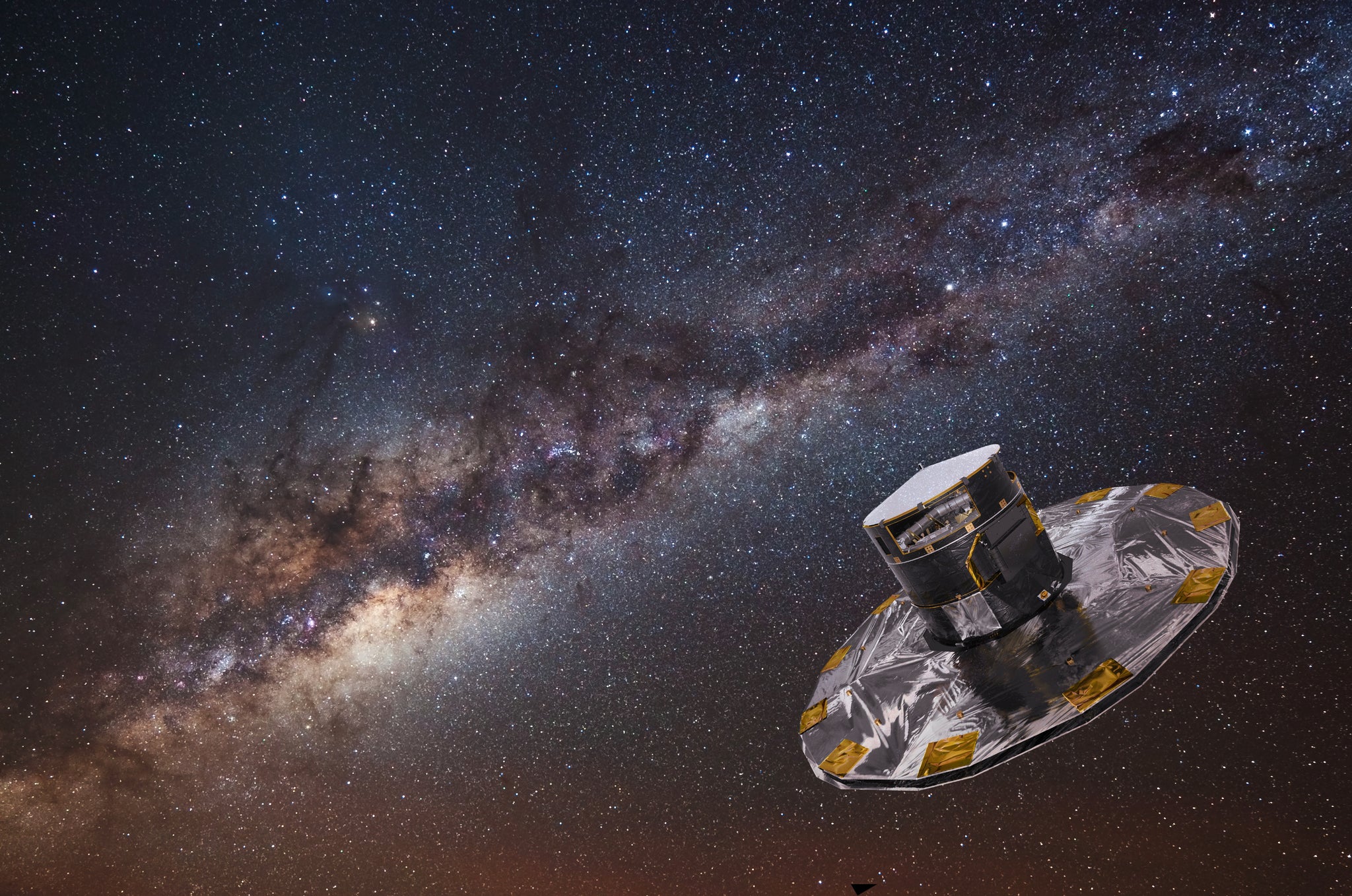Gaia satellite begins five year quest to create 3D map of one billion stars
The satellite has arrived at one of Solar System's gravitational 'sweet spots' 1.5m km from Earth, rotating once every six hours like a galactic lighthouse

Your support helps us to tell the story
From reproductive rights to climate change to Big Tech, The Independent is on the ground when the story is developing. Whether it's investigating the financials of Elon Musk's pro-Trump PAC or producing our latest documentary, 'The A Word', which shines a light on the American women fighting for reproductive rights, we know how important it is to parse out the facts from the messaging.
At such a critical moment in US history, we need reporters on the ground. Your donation allows us to keep sending journalists to speak to both sides of the story.
The Independent is trusted by Americans across the entire political spectrum. And unlike many other quality news outlets, we choose not to lock Americans out of our reporting and analysis with paywalls. We believe quality journalism should be available to everyone, paid for by those who can afford it.
Your support makes all the difference.The largest camera ever launched into space has reached its destination 1.5 million kilometres from Earth to begin work on “the most precise three dimensional map of our galaxy” ever recorded.
The flying saucer-shaped Gaia satellite was launched from French Guiana in December last year by the European Space Agency as the start of a five year mission to locate and analyse roughly one billion stars.
By the time project is complete each star in Gaia’s field of vision will have been scanned around 70 times, measuring not only its position, but also its brightness, temperature and chemical composition.
“Gaia will be a revolution in our knowledge of the local Universe,” said Professor Gerry Gilmore from the University of Cambridge the UK’s Principal Investigator on the project.
“For the first time we will have a fair sample of what is out there, where it is, how it is moving, how unseen (dark) matter is distributed, where and when stars formed and where and when the chemical elements of which we are made were created.”
Gaia is currently orbiting the second Lagrange point of the Sun-Earth system; one of five gravitational ‘sweet spots’ where objects are affected equally by the pull of both the Sun and the Earth.
The satellite will revolve slowly, completing a single rotation once every six hours, while a pair of on board telescopes focus light onto a single focal plane – effectively the largest digital camera ever launched into space with a resolution of nearly a billion pixels.
“The accuracy required is astonishing: Gaia must be able to measure positions to a level equivalent to the width of a human hair seen at 2,000 km,” said the European Space Agency in a press release.
“Gaia will make a huge step towards understanding how the Milky Way came to be formed, and evolved into what we see today,” said Professor Gilmore. “For the first time, we will be able to see the Milky Way in 3-D. In fact in 6-D – where stars are, and how they are moving."
Despite the mammoth scale of Gaia's task it will still only represent a small portion of the Universe, mapping only 1 per cent of our galaxy's roughly 100 billion stars.
Join our commenting forum
Join thought-provoking conversations, follow other Independent readers and see their replies
Comments